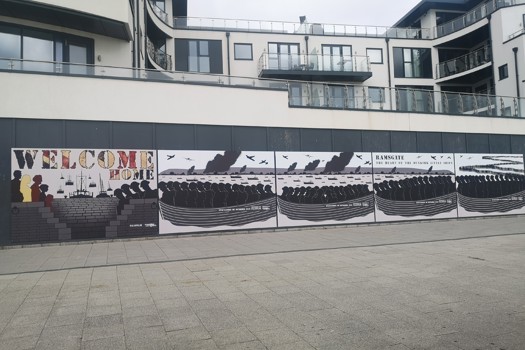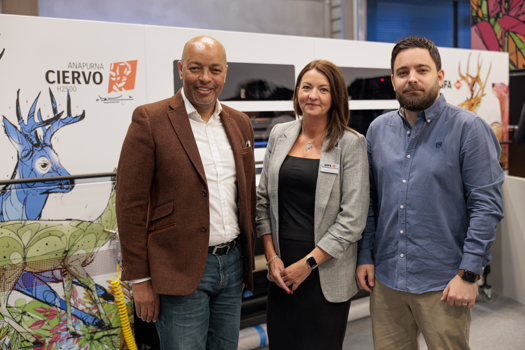So, when two surveys conducted at the end of last year found that consumers were not as bothered as they once were with the environmental performance of packaging, you’d assume that the supply chain, the printer chief among them, would slacken off the environmental pace and concentrate on whatever the consumer was demanding now, namely cost reduction. Not necessarily. Where the environment is concerned, things are never that simple.
The first survey was commissioned by trade show organisers easyFairs and questioned 500 branding, packaging and marketing professionals. It found that just 3% of respondents believed a consumer’s buying behaviour would be significantly influenced by environmentally friendly packaging. Indeed, it found that far from demanding greener packaging, consumers were just assuming packaging manufacturers were already doing their best.
The second survey, from consumer research agency MMR, also found the consumer to be a less-than-passionate environmentalist. It found that, although environmental attributes were on consumers’ radars nowadays, most were not prepared to pay a premium for eco-packaging and neither did they expect brands to sacrifice quality of packaging to this end.
While these results may come as a surprise to some printers – who in order to win work now have more green badges than an over-zealous boy scout – they did not come as a surprise to Jacky Sidebottom, director at Glossop Cartons.
"Environmental concerns were massive a few years ago; everyone was looking to become greener and we had to push our own green message in response," she says. "But now they’re really not the driving force. Instead, our clients, and in turn their clients, are really pushing for efficiencies in order to bring down price. When we go and pitch for work, it is not our green credentials – which we do have – that we are selling first, it is what we can do and what price we can do it at, it is about the packaging being fit for purpose first of all."
Considering environmentally friendly packaging doesn’t come cheap or easy – be it for the consumer buying it, the brand owner commissioning it, or the printer producing it (accreditations alone can be very expensive and time consuming for the printer) – this apparent indifference towards green packaging from the consumer may provide the supply chain with an opportunity to scale back its eco-credentials and concentrate on packaging being fit for purpose and cost effective.
But before printers dispense with their environmental handbooks, they may want to take a closer look at just why consumers are no longer interested in the greenness of packaging. By doing this the printer will be able to gain a better understanding of whether the tide of opinion will turn again, and whether in fact all retailers respond directly to this consumer opinion anyway.
Consumers aren’t interested
Certainly, there are those who feel consumers will never return to pushing retailers for greener packaging due to the fact they aren’t particularly interested in their products’ packaging full stop.
"You have to consider what the drivers are when a consumer is walking around a supermarket. There is a lot of habit involved, a lot of brand loyalty and strong consideration of pricing. Packaging doesn’t necessarily enter the equation," says Alison Church, event director at EasyFairs UK and Ireland.
"All the evidence suggests that when consumers are shopping, packaging almost does not enter their consciousness other than for the branding and marketing purposes," agrees Dick Searle, chief executive of the Packaging Federation. He says that the only time a consumer really considers packaging is "when they stick it in their bin", stating that, as a result, "you do not design packaging for the consumer".
When it comes to packaging, then, it is brand recognition and design that may tempt a consumer, alongside price, which packaging plays a part in. A more unconscious demand from the consumer is also that the packaging is fit for purpose, says Searle.
"You design packaging to do its job. That is: contain, protect, preserve, promote – those are the primary functions of packaging," explains Searle, of brands and retailers’ packaging priorities. "It is quite a complex job as it is and this is what the packaging supply chain, and printers, should be aiming to promote – their ability to meet this criteria. If the packaging can do its job and be cost effective, then you can look if it can also be more environmental. But the latter cannot compromise the first two drivers."
But some would counter that consumers are not in fact as uninterested in packaging, and so not as solely concerned with avoiding unfit packaging and not paying too much, as Searle and Church state.
Rob Pearson, senior consultant at sustainability consultancy DNV Two Tomorrows, believes current lack of interest in packaging’s eco-credentials may be more a product of confusion rather than pure lack of interest.
He says that part of the problem is lack of consumer understanding of the increasing multitude of environmental logos out there. Consumers, he says, are just finding it too difficult to engage with packaging’s environmental issues.
Church concedes there may be some truth in this. "I think what arguably has more of an impact on consumers is not logos or the like, but messaging on pack or in store that explicitly explains how the packaging has improved its environmental performance," she says. "Sainsbury’s for example, is very good at including messaging like ‘uses 20% less packaging’. Those more easily communicated messages are actually more effective."
What seems to be needed, then, is a slightly more intelligent approach to selling the eco-credentials of a product’s packaging to consumers. Instead of presenting the retailer with lots of badges that they can’t sell on to their customer, printers should perhaps be suggesting new ways for brands to educate the consumer about sustainable packaging.
Having boosted their reputation with consumers through doing this, it’s likely brands will, after all, be grateful to their printers for taking the initiative.
Focus on food waste
One key way of changing the conversation about the environment and packaging to help consumers understand it, says Church, is focusing on packaging’s crucial role in preventing food waste.
"Stopping food waste is a very important environmental message, and packaging has a crucial role," she says. "Packaging that prevents food waste, then, is something printers should be shouting about. Printers, brands and retailers all need to really get that message out that packaging plays a massive role in shelf life and protection of food and it doesn’t get the credit it deserves environmentally for that role."
And even if the consumer still doesn’t prove as receptive to this new, more accessible, messaging as Pearson and Church feel they might be, this may not actually in the end matter as much to the brand, and therefore the printer, as you might assume. Louise Stevens, sustainability manager at drinks company Innocent, points out that the consumer may be king in many ways, but is not necessarily the key driver in brands’ efforts to go greener.
"Packaging is now less of a consumer concern, but our sustainability priorities have never been consumer led," she explains. "We work on the areas of greatest impact to the business and as such packaging remains a major focus for us. I think the only thing that may change is that we talk about our packaging initiatives a little less via our various online and social media channels.
"And, as signatories of WRAP’s Courtauld Commitment, we’ve effectively made a pledge to reduce the carbon impact of our packaging, as have the other 50-plus retailer and food and drink brand signatories, so hopefully they’re not scaling back their efforts either!"
Pearson adds that the supply chain also has to be aware that eco demands will only increase, be it from government, brands or even the consumer.
"I can’t see consumers getting less interested in sustainable and environmental packaging, that desire will only increase," he says. "And so the supply chain should be ready for that."
In light of this, it’s perhaps as crucial as ever for printers to have green credentials and a broader knowledge of the environmental issues surrounding packaging, ready for when those many brands still highly invested in this area ask about this. This, says Glossop’s Sidebottom, has certainly been her approach, even in the face of declining demand for eco-credentials from some quarters.
So while the EasyFairs and MMR research is certainly important for printers to be aware of – with consumers’ lack of interest filtering through to affect retailers’ and brands’ strategies in some cases – it’s perhaps best for printers to respond cautiously to research showing consumers are no longer interested in green packaging.
There are many brands that are still very concerned to make their packaging as eco-conscious as possible, regardless of what the consumer is demanding. And it’s those brands that are the printer’s clients, not the apparently uninterested end-user.
Eco-packaging is not yesterday's news

When it comes to decisions made in the retail sector, the consumer is king. At the merest whiff of a change in trends, the whole supply chain gears itself to meet the shift.







